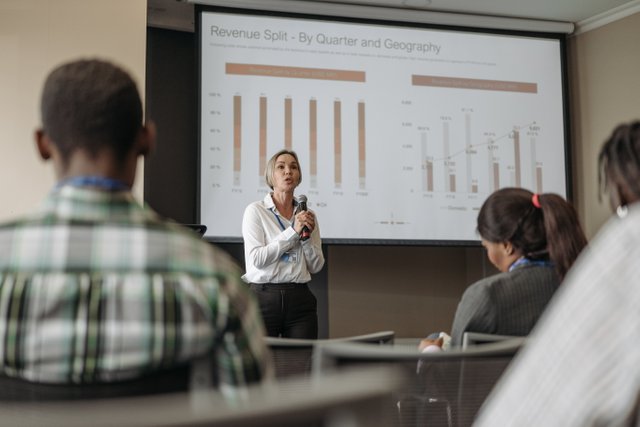DIRECTIONS OF COMMUNICATION

Communication can be either vertical or downward when considering the flow.
Communication that moves in both directions – upwards and downwards is
termed as Vertical Communication and communication that moves in lateral
direction is termed as Horizontal Communication.
Communication can be classified as follows:
#DownwardCommunication
#UpwardCommunication
#HorizontalCommunication
#DiagonalCommunication
I. DOWNWARD COMMUNICATION
Downward communication is the information that is exchanged between a
manager and a subordinate in other words from top level to low level. In the best
of cases, the information is clear and direct. The purpose of such communication
is to inform about policies, procedures, programmes and objectives and to issue
orders and instructions to the subordinates. The information is sent through verbal
or written orders.
The objectives of Downward Communication are:
-To train subordinates in performing the job.
-To motivate employees to improve their performance.
-To know how effectively a person is performing his job.
-To explain organisational policies, programmes and procedures.
-To give instructions about what to do and how to do.
-To highlight the areas of attention
Merits of Downward Communication are
#JobSatisfaction – The management communicates the employees about
their better performance in the organization because of which the
employees feel motivated.
#DutyandAuthority – By assigning duties and giving authority to the
employees it becomes clear as to what is expected of them and how much
authority is vested in them.
#PlansandPolicies – Through downward communication, the employees
are informed about the organisational plans and policies.
#MissionandGoals – Employees are informed about the mission and goals
of the orgnisation and how they can be an asset by contributing to
accomplish the goals
Demerits of Downward Communication are
#Distortion - In the long line of downward communication, information is
very likely to be distorted because of fabrication during interpretation as
made by the subordinates. Information to pass through the long chain of
command is supposed to lose its originality at every level.
#Time Consuming - The line of communication is the downward
communication is very long. It takes too much time to transmit the
information to the lowest level of management. When information reaches
the destination, it is too late & the communication loses it significance.
#Reduction of Efficiency - Efficiency is increased when there is a cordial
or communicative environment. But downward communication is
generally commanding in nature which is against the rules of effective
communication. So workers or employees do not get the opportunity to
become efficient.
#Incomplete Information – Sometimes managers do not communicate the
complete information to the team members because they want the team
members to be dependent on them. However, managers do not realize that
without complete information the team members will not be able to carry
out the tasks efficiently.
II. UPWARD COMMUNICATION
It is non directive in nature. Effective upward communication is possible only
when organizations empower their employees and allow them to participate freely
in decision making. Through this type of communication employees can
communicate information to their superiors freely and can voice their opinion.

Methods of Making Upward Communication More Effective
#GrievanceRedressalProcedure – It enables employees to bring forward
their work related issues to the notice of the top management and seek
immediate assistance. General Electric and Federal Express have set up
peer review boards where the arguments of both parties are heard and a
decision is arrived at.
#OpenDoorPolicy – Under this policy employees are free to approach
managers at any time and discuss their problems with them.
#CounselingAttitudeQuestionnaireExit Interviews – The personnel
department conducts non directive counseling sessions to help employees
deal with their work related issues also, questionnaires may be
administered periodically to find out about employees attitude towards work.
Exit interviews are held for finding out the reason for leaving and
for giving suggestions for improving the workplace.
#TheOmbudsperson – Through an ombudsperson the employees can have
their problems resolved quickly without going through lengthy channels.
III. HORIZONTAL COMMUNICATION
Horizontal communication is necessary to develop a collaborative and proactive
culture in an organisation. People communicate with others at their own level, in
their own departments or other departments, to solve problems and to share
experiences. Devices such as problem clinics and task forces are used for this
purpose.
A problem clinic is conducted by people concerned with a problem to diagnose
and generate alternative solutions. A task force is constituted of persons from
different departments or different sections to work on a given problem and make
necessary recommendations to solve the problem.

Horizontal communication involves not only the movement of information from
the upper levels to the lower levels of the organizational hierarchy but also is
defined primarily as the quality of information sharing among peers at similar
levels.
The main objectives of horizontal communication are developing teamwork, and
promoting group coordination within an organization. It takes place between
professional peer groups or people working on the same level of hierarchy.
Horizontal communication is less formal and structured than both downward
communication and upward communication, and may be carried out through
informal discussions, management gossip, telephone calls, teleconferencing,
videoconferencing, memos, routine meetings and so on.
IV. VERTICAL COMMUNICATION
Vertical communication occurs between various hierarchies. It maybe upward or
downward. For example manager to employee, general manager to managers,
foreman to machine operator, head of the department to cashiers, etc.
Downward communication is more prevalent than upward communication. It is
suggested that downward communication is most effective if top managers
communicate directly with immediate supervisors and immediate supervisors
communicate with their staff.
The major purposes of downward communication are to advise, inform, direct,
instruct, and evaluate employees and to provide organization members with
information about organizational goals and policies.
